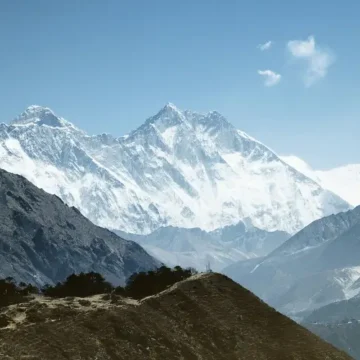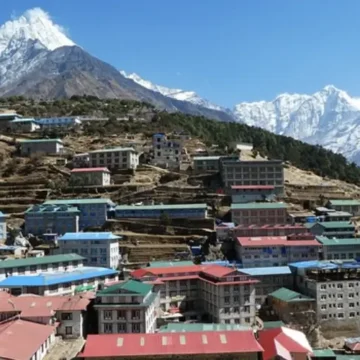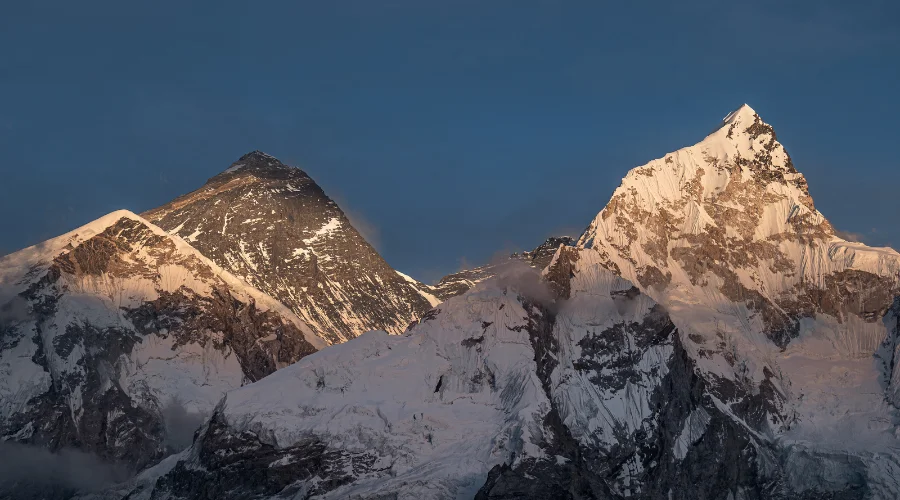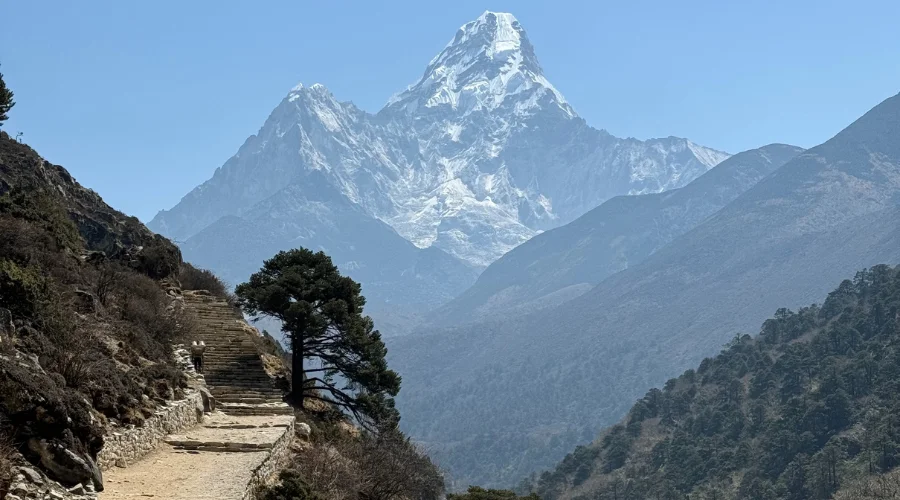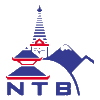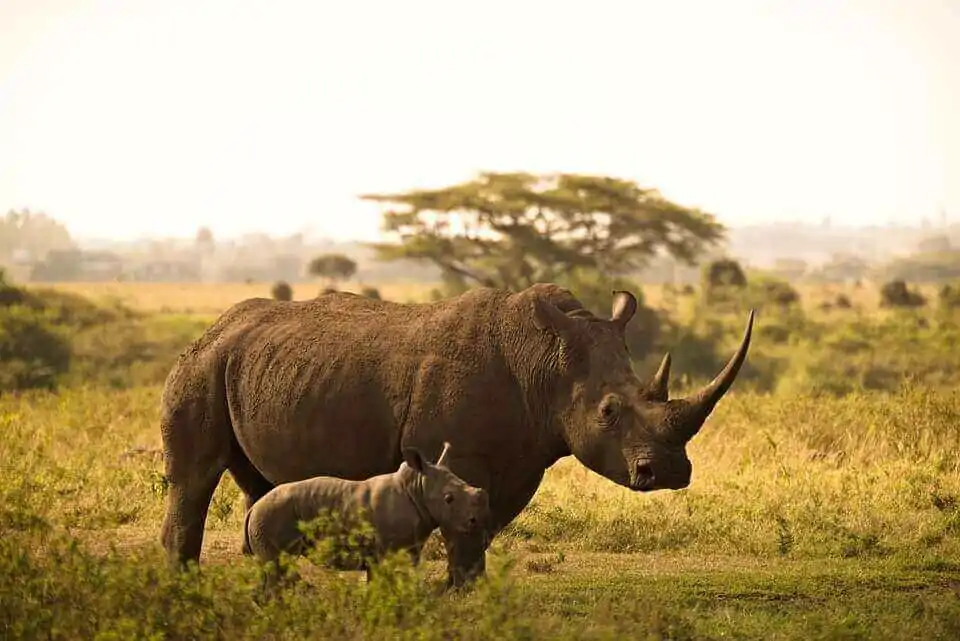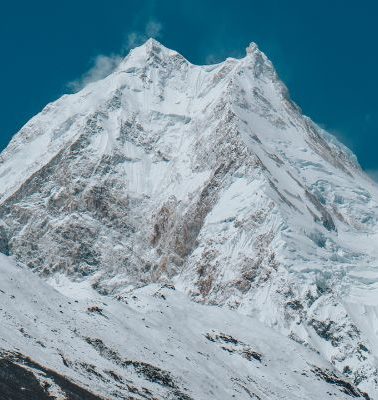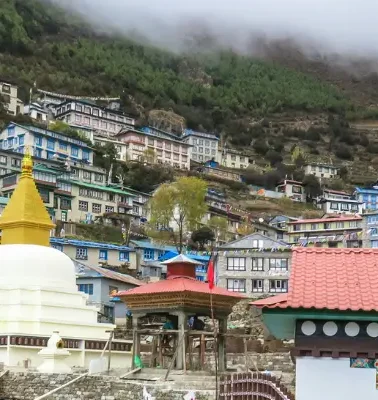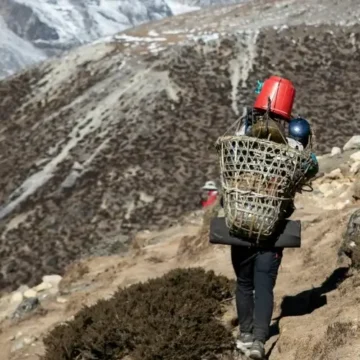
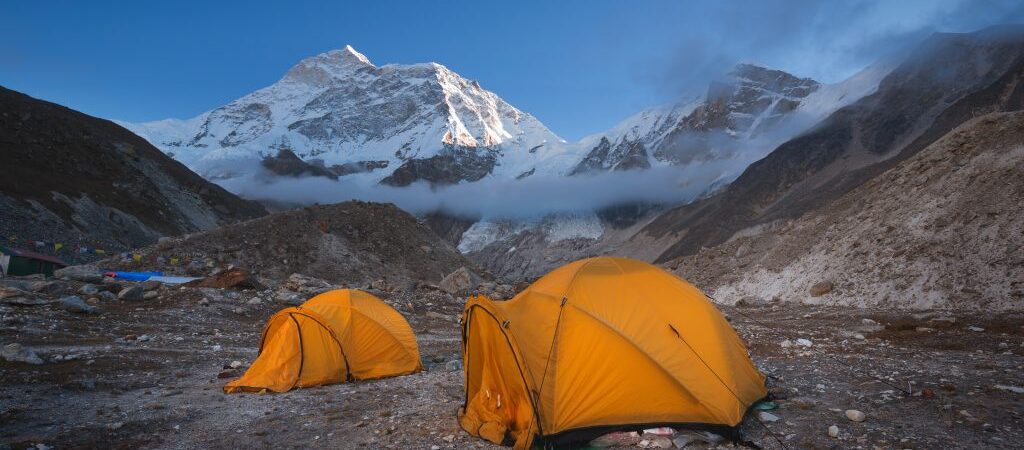
- TRIP DURATION
- 20 Days
- MAX. ALTITUDE
- 4870m
- TRIP GRADE
- Moderate
- LODGING
- Hotels/ Teahouses/ Tents
- BEST SEASON
- Spring and Autumn
- PER DAY WALK
- 5-6 hours
Makalu Base Camp Trek
Makalu Base Camp trek is a significantly adventurous hike in the Mahalangur Himalayan range. Trekking to the foothills of the world’s fifth tallest mountain at 8,481meters above sea level is already a blessing. Along with the stunning snow-clad terrain landscape, the unbelievable variation in flora and fauna, and the local Himalayan community makes Makalu trek an expectation journey in Nepal.
The awesome bio-diversity inside Makalu Base Camp is worth exploring. It’s been ranked Moderate to Challenging and conquered by the trekkers with very strong stamina. It’s one of the least explored and under-rated trekking destinations of Nepal. Makalu is less known due to its inaccessibility from Kathmandu. However, after the introduction of daily flights to Tumlingtar, tourists are starting to recognize its beauty.
A couple of tea houses has been made along the trail and it can be both a tea house and camping trek. Yet, Makalu Base Camp Nepal takes 20 days to complete and remains the most difficult base camp trek in Nepal. So, if you are up for some adventure, get your bags ready. Makalu Base Camp trek commences with the fly to Tumlingtar and then hike to Num. There are huge terraced farms and villages that have been homed by the Rai people of the east.
Ascending via many beautiful rhododendron forests (with blooms of red, purple, pink, and white), we get to Khogma Danda for acclimatization. Trekking deeper inside the mountains, we pass steep granite cliffs and glaciers to Langmale Kharka. Only on the 15th day, you get to the Makalu Base Camp and then get to Tumlingtar airport on the same route.
Some Facts of Makalu Base camp Trek:
- Duration of trek 20 days
- The beginning point of the trek: Chichila
- The closing point of the trek: Num
- Maximum elevation: 4850 mt.
- Accommodation: Teahouses/Camping
- Best Seasons to visit: The trail is open throughout the year however, Spring and Autumn the best
- Trek Category: Hard
- Transportation: Flight/Bus/car/taxi/jeep
- Permits: TIMS and National park fees
ITINERARY
Day 01: Arrival in Kathmandu
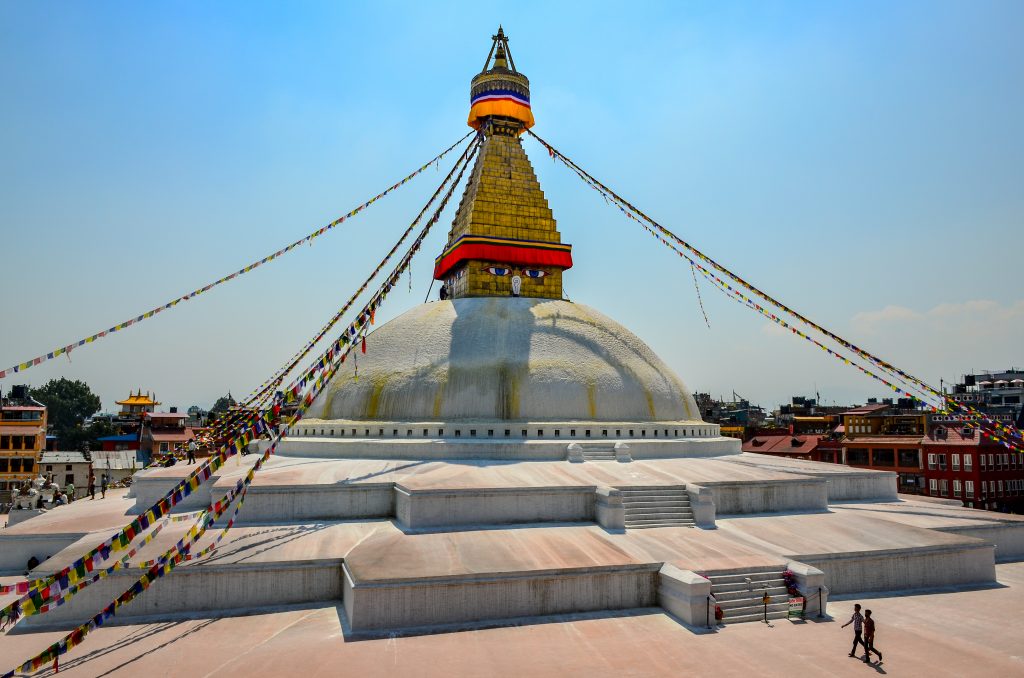
As soon as you arrive at the airport in Nepal, our team will pick you up. Since then, you will be in safe hands for another 20 days; everything will be taken care of. In the evening, there will be a briefing session about the tour and also some time for shopping. Later, we shall all celebrate with a welcome dinner and you will be introduced to the rest of the team.
Overnight in Kathmandu
Accommodation : Hotel in Kathmandu
Day 02: Fly to Tumlingtar (1 hour) and drive to the starting point, trek to Num
Altitude: 1040m / 1560 m
Flight to Tumlingtar is available from Kathmandu airport; this is only 35 minutes of flight. The domestic flight above the mountains of Nepal is an enthralling experience.
When you arrive at Tumlingtar, there will be a jeep waiting for you to take you on a bumpy, dusty ride up to Num. Driving along the off-route of hills isn’t very easy, however, it’s an adventurous ride. It passes through hilly regions and some bumpy roads, occasionally providing glimpses of the countryside. Human settlements are seen as small villages in the hills where farming is done naturally. Your permits will be checked at Chichila check posts.
At Num, we will either stay in a local hotel or set up our first tent.You can take a slow walk around the villages and appreciate the peace and the beautiful sight of the rivers flowing through the valley.
Overnight in Tumlingtar
Accommodation : Teahouse
Walking / Driving : 35 min flight and 3-4 hours drive
Day 03: Trek to Seduwa via the Arun River
Altitude: 1500 m
The day starts with the downhill walk of about 2hrs. After crossing the suspension bridge over the river, we walk to the Rhododendron forest.
The hike begins with a gradual descent through lush forests and farmlands, providing a refreshing start to your adventure.
You’ll pass through a small Rai village, where you can observe their traditional farming practices and experience their warm hospitality. The villagers are known for their skills in cultivating paddy, millet, corn, and potatoes, and they are always ready to share a smile and a friendly greeting with visitors.
Overnight in Seduwa
Accommodation : Teahouse
Walking / Driving : 5-6 hours
Day 04: Trek to Tashigaon
Altitude: 2100 m
The trek to Tashigaon begins with a relatively flat and easy trail, allowing you to enjoy stunning views of the Arun River valley and the surrounding mountains. As you walk, you’ll find rhododendron forests and wildflowers too.
The trail leads you to Tashigaon, a charming Tibetan Buddhist village between the hills. As you arrive, you’ll be greeted by a peaceful atmosphere, with prayer flags fluttering in the wind and Chortens. The villagers are known for their warm hospitality and their deep connection to their traditions.
Overnight in Tashigaon
Accommodation : Teahouse
Walking / Driving : 5- 6 hours
Day 05: Trek to Khongma Danda
Altitude: 3500 m
The climb towards Khongma Danda starts with an easy incline through the thick subtropical forest, which must be quite a relief from the heat.
There are opportunities to observe various species of plants and animals in the forest, which can be described as lively. With the increase in altitude, the size of the mountains around grows larger, and one can see the great Himalayan ranges.
During the trek, one comes across small villages home to the Sherpas, people of Nepalese origin who are very skilled at mountain climbing and very close to nature. Usually constructed from stone and wood, the houses are integrated into the environment to perfectly illustrate the area’s ecological ideals.
Overnight in Khongma Danda
Accommodation : Teahouse
Walking / Driving : 5- 6 hours
Day 06: Acclimatization day in Khongma Danda
Altitude: 3500 m
After gaining a lot of altitude yesterday, we will stop at Khongma Danda for another day. Having a rest day at such an altitude is important for your body. It’s a day for some camp firing, singing, and dancing. After a rest day, you will be fully rejuvenated for the further walk.
Overnight in Khongma Danda
Accommodation : Teahouse
Walking / Driving : Depends
Day 07: Trek to Dobate via Shipton La
Altitude: 3650 m / 4229 m
Today, there is an ascending towards Shipton La, another high-altitude pass. The trail is normally rocky especially where it is steep and one has to exert a lot of energy to cover the distance. As the altitude increases, the pressure of the atmosphere gradually reduces and the climate and geographical features of the area become mountainous with snow and glaciated.
The views from the top of Shipton La are wonderful. After you are through with the good views, you will then start descending towards Dobate. They are not as steep and some of them can be quite challenging as you navigate through more sharp rocks and sometimes loose gravel. It is a tiny village situated in the mountains with basic homestays.
Overnight in Dobate
Recommended Reading:- Detailed Itinerary About Khopra Danda Trek
Accommodation : Teahouse
Walking / Driving : 6 - 7 hours
Day 08: Trek to Yangle Kharka following the Barun River upstream
Altitude: 3557 m
The trail to Yangle Kharka begins along the Barun River, passing through some beautiful forests and streams. The air is fresh and cool, and the sound of the water gushing over the rocks makes for a very serene environment. One significant factor is that the trail is not so steep, and you can view the surrounding mountains well.
Along the way are small settlements of indigenous Sherpa and Rai people. Their houses are almost camouflaged. The inhabitants are always friendly and have a strong bond with the mountain. The day ends with a fulfilling arrival at Yangle Kharka, a valley in gorgeous hills. Here, you will find simple accommodations where guests can take a break and spend the night.
Overnight in Yangri Kharka
Accommodation : Teahouse
Walking / Driving : 5- 6 hours
Day 09: Trek to Yak Kharka
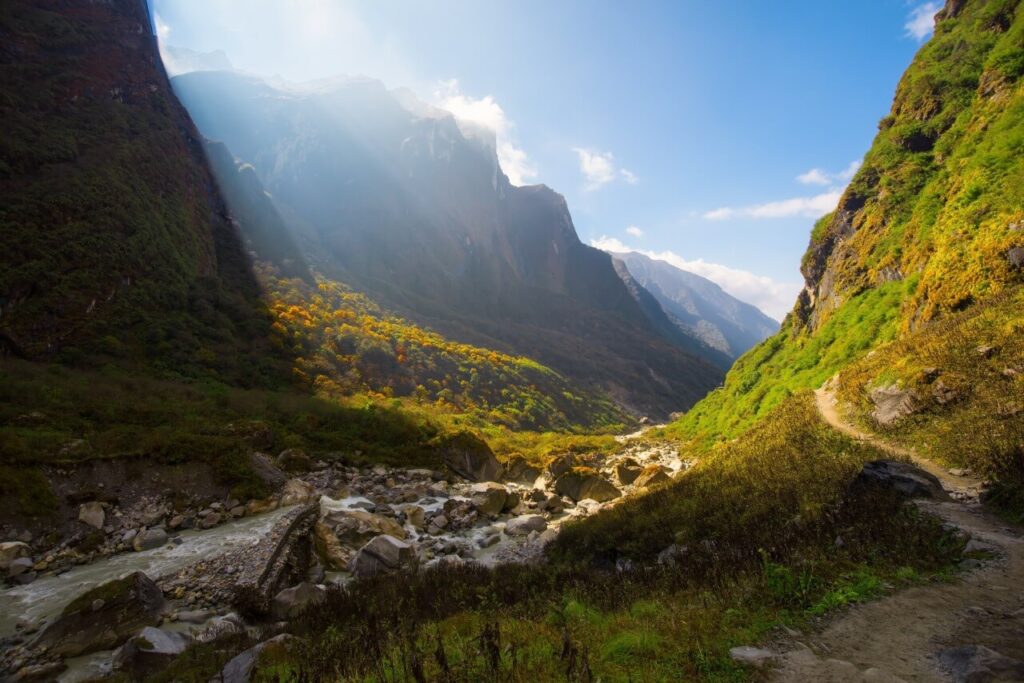
Altitude: 4020 m
Yak Kharka is reached through a path that changes the landscape into an alpine meadow. It may be rarefied, but the scenery is spectacular.
The trail is rather flat and easy, so you can focus on the stunning views. You can expect to see yaks wandering in the pastures, giving the scenery a natural look of authenticity.
You will arrive at Yak Kharka, a small village in the alpine region. The surrounding mountains are beautiful, and you will feel like you are arriving at Makalu Base Camp. Yak Kharka has simple lodges where tourists can rest and relax after trekking.
Overnight Yak Kharka
Accommodation : Teahouse
Walking / Driving : 5- 6 hours
Day 10: Trek to Makalu Base Camp
Altitude: 4870 m
The final push to Makalu Base Camp is relatively flat and easy, taking you through beautiful alpine meadows. The air is thin, and the scenery is breathtaking. As you walk, the towering Makalu massif looms ahead.
The trail offers spectacular views of the surrounding mountains and glaciers. The sense of accomplishment is amazing as you reach Makalu Base Camp. You’ll set up camp at the base camp, enjoying the serenity of the high altitude and the breathtaking views.
Overnight in Makalu Base Camp
Accommodation : Tent
Walking / Driving : 5 - 6 hours
Day 11: Day walk around Makalu Base Camp
Altitude: 4870 m
Today is a day to explore the stunning landscapes around Makalu Base Camp. Take a leisurely walk around the camp, exploring the surrounding glaciers and capturing unforgettable photographs.
As the sun rises over Mount Makalu, you’ll be treated to a spectacular sunrise. This scene of incredible beauty will leave a lasting impression.
Overnight in Makalu Base Camp
Accommodation : Tent
Day 12: Back to Yangle Kharka
Altitude: 3557 m
The descent back to Yangle Kharka offers a chance to enjoy the familiar scenery. The trail is relatively easy, allowing you to see the breathtaking views and reflect on your journey. As you walk, you’ll encounter the same small settlements and the friendly villagers you met on the way up. The air feels heavier as you descend, but the scenery is just as breathtaking.
The day concludes with a rewarding arrival at Yangle Kharka, where you can settle into a guesthouse and rest.
Overnight in Yangle Kharka
Accommodation : Teahouse
Walking / Driving : 8 hours
Day 13: Trek to Dobate
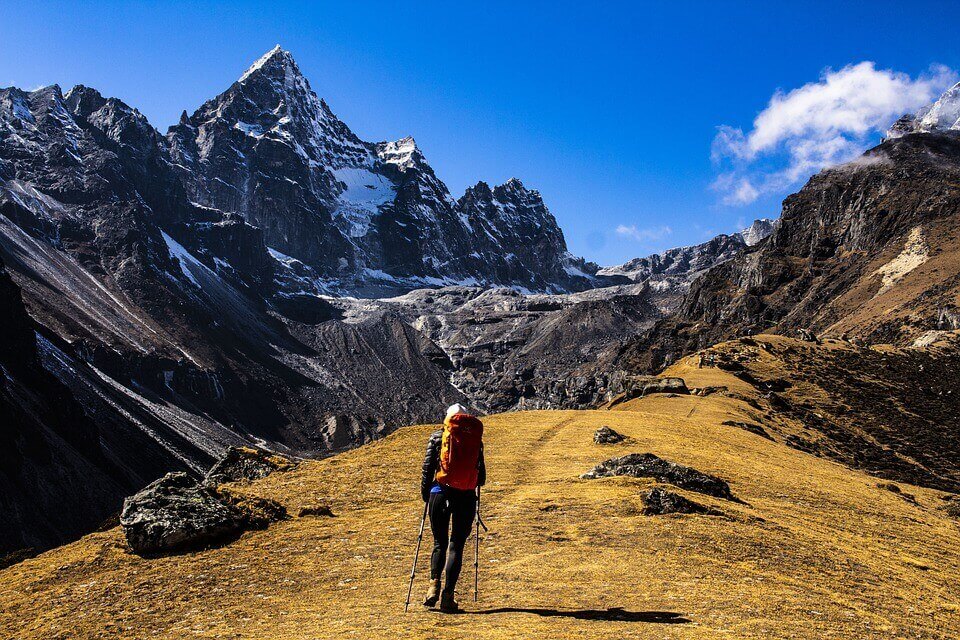
Altitude: 3650 m
The trek back to Dobate is a gradual descent through beautiful landscapes, offering a chance to enjoy the familiar trails and the breathtaking scenery. The air is thicker, but the views are just as stunning. You’ll pass through the same settlements, but the sense of accomplishment makes the journey feel even more rewarding.
As you reach Dobate, you’ll find a welcoming guesthouse offering a comfortable respite after the day’s trek.
Accommodation : Teahouse
Walking / Driving : 6 - 7 hours
Day 14: Trek to Khongma Danda
Altitude: 3500 m
The trek back to Khongma Danda takes you through a thick subtropical forest, offering a welcome change in scenery after the alpine meadows. The air is warmer, and birdsong fills the air. The vibrant greenery is a testament to nature’s flexibility in these challenging conditions.
As you ascend, the trail becomes a bit steeper, but the beauty of the forest will keep you captivated. You’ll pass through the same small settlements.
Overnight in Khongma Danda
Accommodation : Teahouse
Walking / Driving : 6 - 7 hours
Day 15: Trek to Tashigaon
Altitude: 2100 m
The trek to Tashigaon is a gradual descent, taking you through beautiful landscapes offering stunning views of the surrounding mountains. The air is a bit warmer.
As you descend, you’ll pass through vibrant rhododendron forests. The trail is moderately easy, allowing you to enjoy the stunning scenery.
You’ll arrive in Tashigaon, a charming Tibetan Buddhist village in the hills. The village is adorned with prayer flags, creating a serene atmosphere. The villagers are known for their hospitality and deep connection to their traditions.
Overnight in Tashigaon
Accommodation : Teahouse
Walking / Driving : 7 - 8 hours
Day 16: Trek to Seduwa
Altitude: 1500 m
The trek to Seduwa is a relatively easy descent, offering a chance to enjoy the familiar scenery and reflect on your journey. The air is thicker, but the views are just as stunning. You’ll pass through vibrant rhododendron forests and small settlements inhabited by Rai people.
Overnight in Seduwa
Accommodation : Teahouse
Walking / Driving : 4- 5 hours
Day 17: Trek to Num
Altitude: 1560 m
Ready for the final day of the trek? Today’s journey along with the terrace farms and classic Nepalese village will be equally interesting. We will be walking along with different settlements before getting to Num.
Overnight in Num
Accommodation : Teahouse
Walking / Driving : 5-6 hours
Day 18: Drive to Tumlingtar
Altitude: 1040 m
In the daytime, we hop into a local Jeep that brings us to the airport at Tumlingar. Your long journey ends here. A local jeep will take you back to Tumlingtar, the gateway to the Makalu Base Camp trek. The drive is bumpy but scenic, offering one last chance to enjoy the spectacular views of the Himalayas.
Overnight in Tumlingar
Accommodation : Hotel
Walking / Driving : 4 hours
Day 19: Fly to Kathmandu
Altitude: 1320 m
As you stay in the luxurious seat of the domestic airplane, you will be excited to be flying above the mountains. Soon, you will be driving to your hotel in Thamel from Kathmandu. A private car drop you in a hotel room and you will have some time for souvenir shopping. In the evening, the entire team gathers for the farewell dinner and we shall celebrate the victory together.
Overnight in Kathmandu
Recommended Reading:- Detailed Itinerary Of Annapurna Base Camp Trek
Accommodation : Hotel in Thamel
Walking / Driving : 35 min flight
Day 20: Departure
As per your flight time, a private car drops you at the airport. You don’t have to worry about paperwork and all. Soon, you will be flying back to the homeland. Wish you a great journey ahead.
So, when do you plan to complete this amazing journey? Do inform us about your arrival and we shall make the arrangements.
include / exclude
Trip Cost Includes
- Airport pick up & drop off service in a private vehicle
- 3-star accommodation in Kathmandu with breakfast
- Best available clean and comfortable Tea house accommodation during the trek
- All meals (breakfast, lunch and dinner) with tea/coffee during the trek
- Staff insurance and necessary ground transport for support staff
- Guide for 9 days
- Trekking permits – Annapurna conservation permit and TIMS Card.
- All Local and Government taxes, administrative charges
Trip Cost Excludes
- International flight ticket and Nepal entry visa
- Personal travel insurance (Which should include coverage for trekking)
- Lunches and dinners in Kathmandu, except the farewell dinner
- Personal gear for trekking (Including any you may wish to hire in Kathmandu), any personal expenses (i.e. soft and alcoholic drinks, snacks etc.)
- Tip For filed staff
useful info
How Difficult Is the Makalu Base Camp Trek?
Well, it isn’t easy. The Makalu Base Camp trek is among the most challenging treks in Nepal, and it is more than 250 km in distance. Compared to other base camp treks like Everest and Annapurna, this particular trek needs a lot of preparation and a muscular physique. However, there’s no need for climbing gear and mountaineering skills. Our guide will teach any climbing skills required for the dangerous part before the trek.
The elevation of the Makalu trek is also 4800 meters, and the chances of altitude sickness at such a height are severe. You need to add acclimatization days to your Itinerary and walk very slowly. Other than altitude and distance, the hardest part of the Makalu Base Camp trek is its remoteness. Once you reach the higher altitude, you barely see any villages and meet people.
Trip Grade: Fitness level, Medical, and health
The Makalu Base Camp trek is a challenging adventure that demands good physical fitness and endurance. Trekkers can expect difficulty walking moderately for around six to eight hours daily, often on rugged terrain. The altitude can rise to 5000 meters, posing challenges for some individuals.
The trekkers should be prepared for more strenuous activity and have a good endurance level. Trekkers must be in good health and physical condition before starting this journey. Those with pre-existing conditions such as asthma, high blood pressure, or cardiovascular disease are advised against attempting this trek without consulting a doctor first.
Altitude Sickness in Makalu Trek
Altitude sickness is a big worry when trekking to Makalu Base Camp trek. Before going to higher places, ensure you’re used to the altitude. It’s wise to climb slowly and take breaks to get used to the height. If you start feeling sick, like a headache or dizziness, it’s crucial to go down to a lower place and see a doctor. The highest elevation during the trek is 4800 meters so make sure to acclimatize properly and drink enough water to avoid altitude sickness.
Trekking Experience for Makalu Circuit Trek
Having some climbing experience can be helpful when climbing the Makalu Base Camp trek. The Makalu Circuit Trek is a challenging trek, and having some hiking experience and basic climbing skills can make it easier. It’s good to be comfortable walking for long hours each day and be prepared for rugged terrain.
If you’ve climbed other mountains before or done challenging hikes, you’ll feel more confident on this trek. However, even if you’re new to climbing, as long as you’re in good physical shape and ready to take on the challenge, you can still enjoy the adventure of reaching the Makalu Base Camp trek. Take it slow, listen to your guide, and enjoy the breathtaking views.
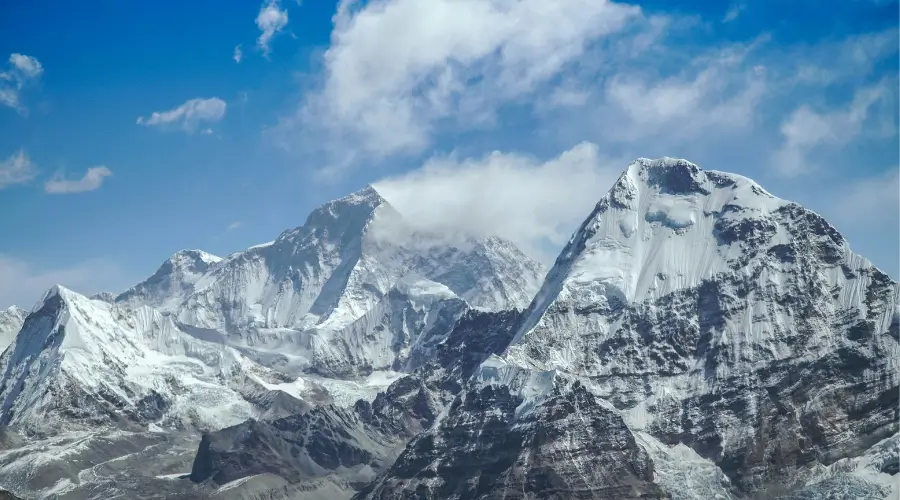
Emergency and evacuation at Makalu Base Camp Trek
Helicopter rescue is the primary means of evacuation. Helicopter rescue can be costly on favourable weather conditions. In an emergency, contact local authorities or your trekking agency promptly. Your trekking agency will arrange an evacuation helicopter, but you are responsible for the costs. The trekking agency does not provide travel insurance. You must purchase your policy from your home country. Expect to pay around $250 – $400 for comprehensive travel insurance.
Kit and equipment for Makalu Trek
When getting ready for the Makalu Base Camp Trek, it’s crucial to pack the right gear since you’ll be in a remote area with limited supply access. Here’s a simple list of things to bring:
Clothing:
- Base Layers (synthetic base layers (2 sets) for warmth and moisture-wicking)
- Fleece jackets
- Down jackets for varying temperatures
- Waterproof and breathable shell jacket and pants
- Trekking Pants
- Hiking Shorts
- Warm Hat
- Gloves
- Socks
- Headscarf/Buff
- Sunglasses (Polarized sunglasses with UV protection)
- Sun Hat
Footwear:
- Hiking Boots (Waterproof, sturdy, and well-broken-in boots, with ankle support)
- Hiking Shoes
Backpack:
- Trekking Backpack (Durable, with a comfortable fit, 60-70L capacity)
- Daypack
- Waterproof Backpack Liner
Sleeping Gear:
- Sleeping Bag (Rated for -20°C/-4°F or colder, down or synthetic)
- Sleeping Pad
Other Gear:
- Water Bottles (2-3L capacity, with purification tablets)
- Trekking Poles
- First Aid Kit
- Toiletries
- Toilet Paper
- Portable Hand Sanitizer
- Personal Documents (Passport, visa, insurance information, emergency contact details)
- Cash
- Credit Card
- Camera
- Binoculars
- Waterproof Bags
Special training
Special training for the Makalu trek should focus on building physical fitness and endurance. To improve your stamina, you can start with regular aerobic exercises like walking, jogging, or cycling. Strength training exercises for your legs, core, and upper body will help you cope with the demands of the Makalu Circuit Trek.
It’s important to gradually increase the intensity and duration of your workouts to prepare your body for the long trekking days. Practicing hiking with a backpack is also beneficial, as it will help you get used to carrying a load during the Makalu Barun National Park trek.
Best Time for Makalu Base Camp Trek
The Makalu Base Camp Trek can be enjoyed at different times of the year, depending on your preference and your situation. Here’s a more detailed look at the two best times to trek to Makalu Base Camp trek:
Spring (March to May):
Pros:
- Clear skies and warm weather.
- Stunning rhododendron forests in bloom.
- Sunny and mild days, making trekking comfortable.
- Ideal conditions for completing the trek with ease.
Cons:
- It can be crowded with other trekkers, and you may not get teahouses if the advance booking is not made.
- Potential for late snowfalls.
Autumn (September to November):
Pros:
- Clear skies and dry weather after monsoon season.
- Moderate temperatures with cool nights, aiding acclimatization.
- Uninterrupted views of surrounding peaks, perfect for photography.
Cons:
- Early snowfall is possible in higher altitudes.
- Temperatures can drop significantly at night.
Weather Information of Makalu Barun Trek
Spring (March-May):
- Temperature: Mild, with daytime highs around 15-20 degrees Celsius and nighttime lows dropping to near freezing (around 0 degrees Celsius).
- Precipitation: Moderate rainfall, especially in April. Occasional snowfall can occur at higher altitudes.
Summer (June – August):
- Temperature: Warm with daytime highs around 20-25 degrees Celsius and nighttime lows around 10-15 degrees Celsius.
- Precipitation: Heavy monsoon rains with increased cloud cover and reduced visibility.
Autumn (September – November):
- Temperature: Mild, with daytime highs around 15-20 degrees Celsius and nighttime lows dropping to near freezing (around 0 degrees Celsius).
- Precipitation: Less rainfall than spring, occasional snow flurries at higher altitudes.
Winter (December – February):
- Temperature: Cold with daytime highs around 0-5 degrees Celsius and nighttime lows dropping well below freezing (-10 degrees Celsius or lower).
- Precipitation: Heavy snowfall, especially in January and February, with blizzard conditions possible.
Makalu base camp trek permit
Two required permits:
- Makalu Barun Conservation Area Permit: Essential for accessing the base camp.
- Makalu Rural Municipality Permit: Required for entry into the area.
Permit Costs:
- Nepalese citizens: NPR 100 per person.
- SAARC citizens: NPR 1500 per person.
- Other nationalities: NPR 3000 per person.
- Makalu Rural Municipality Permit: NPR 2000 per person.
Food during the Makalu Base Camp Trek
Due to the high altitudes of the Makalu Base Camp Trek, it’s essential to fuel your body with enough nutrition and carbohydrates to support your walking. Here’s a rundown of the typical food options you can expect along the way:
Breakfast:
- Pancakes, oatmeal, muesli.
- Eggs (omelettes, poached, boiled)
- Tibetan bread, buckwheat bread, chapatis.
- Honey, jam, apples.
Lunch:
- Dal Bhat (rice and lentil soup).
- Soups, spaghetti, dumplings, pizza, spring rolls.
- Sandwiches, macaroni, tendu (noodle soup), spaghetti noodles, thukpa (Tibetan noodle soup), pasta, and pizza with various toppings.
Dinner:
- Dal bhat and tarkari (vegetable curry).
- Tibetan bread, soups, Sherpa stew.
- Sandwiches, dumplings, macaroni, tenduk, noodles, thukpa, pasta, vegetable curry, and salad.
Accommodation during the Makalu Base Camp Trek
Accommodation during the trek is typically provided in local teahouses or lodges. These are basic but comfortable places to rest and recharge. You’ll usually find twin- or triple-bedded rooms with shared bathroom facilities. The teahouses and lodges offer basic amenities like hot showers (for an extra fee), electricity from solar panels, and sometimes Wi-Fi (though it can be unreliable). They also serve basic meals, snacks, and drinks for purchase.
It’s important to note that facilities can vary along the trail, and you should be prepared for a more experience, especially at higher altitudes. Nights can be cold, so bring warm clothing. Camping is an option if you’re looking for a more immersive experience. This allows you to get closer to nature but requires more preparation as you’ll need to bring your gear and food.
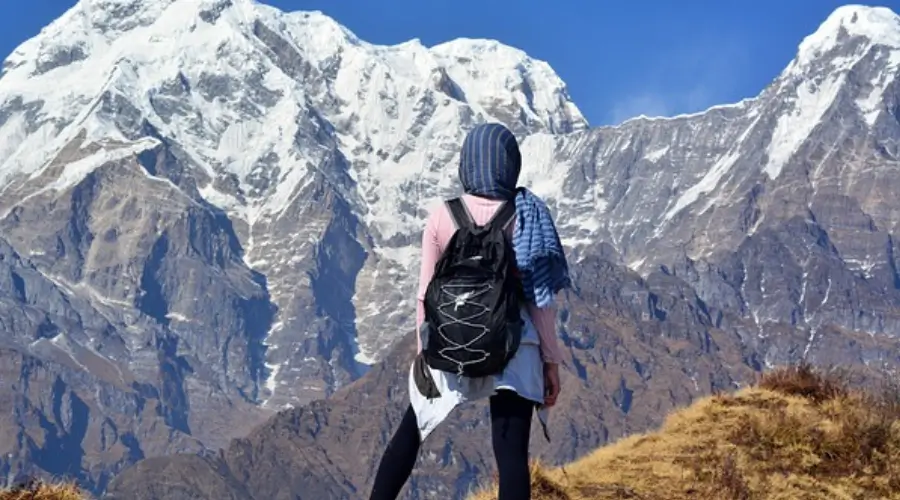
Electricity and battery recharge, water during the Makalu Base Camp Trek
You’ll find electricity during your trek at the teahouses where you stay overnight. They use micro-hydropower and solar panels to generate electricity, and you can recharge your devices like phones, laptops, or iPads there for a small fee. However, there’s no free Wi-Fi available along the trekking trail, so it’s not recommended that you bring your laptop.
When trekking to Makalu Base Camp, you’ll stay in teahouses overnight. These places have electricity thanks to micro-hydropower and solar panels. But remember, you might have to pay a little fee to use the charging facilities.
As for Wi-Fi, you won’t find any free hotspots along the trekking path. So, it’s better not to bring your laptop, as there’s no free internet access. Some teahouses might have Wi-Fi, but you must pay for it.
With Himalayan Masters
Booking:
- Easily book your trek via the Himalayan Masters website.
- Contact the team through email or phone for inquiries and bookings.
- Enjoy convenient airport pickup upon arrival in Kathmandu.
- Friendly staff will guide you to your accommodation in Kathmandu.
Support Team:
- Knowledgeable about the region and its culture, providing valuable insights.
- Porters Carry your luggage, allowing you to focus on the trek.
- Dedicated to ensure your safety and comfort throughout your journey.
Makalu Trek Starting and Ending Points:
- Trek starting point: Typically, Kathmandu, where you meet your guide and Num where you start your trek.
- Ending point: Usually the same as the starting point, with a return transfer to Kathmandu.
A typical day on the Makalu Base Camp Trek
Every morning during the trek, our guide or porter will bring you tea or coffee around 6:30 a.m. After freshening up, you’ll have time to pack your bag before breakfast. Breakfast is usually served around 7 a.m. Before starting the trek, take 5 minutes to stretch and warm up.
Lunchtime is generally around 12 – 1 p.m. Lunch and a cup of tea or coffee are served quickly from the menu. After lunch, there’s usually another 2-3 hours of walking before reaching our camp or lodge. You can rest before dinner, and our guide and porter will bring tea to your room. Then after having your dinner a guide will explain the brief hike of the next day.
Trekking Costs for Makalu Circuit Trek
The Manaslu Base Camp Trek cost is divided and breakdown into following points:
Permits:
Permits are a significant expense for trekking in the Makalu region, which is a restricted area. Expect to pay a substantial amount, often exceeding $100 per person, for the Restricted Area Special Permit and other permits specific to the Makalu Barun Conservation Area, typically ranging from $20 to $30 per person.
Guides:
A licensed guide is mandatory for trekking in the Makalu region. Guide fees are generally charged daily, ranging from $25 to $30 per day, and the cost will depend on the guide’s experience and qualifications.
Porters:
Hiring porters is optional but highly recommended to help carry your luggage. Porter fees are also typically calculated on a daily basis and vary depending on the distance and difficulty of the trek, typically costing between $20 and $25 per day.
Accommodation:
Accommodation options range from basic teahouses to camping. Teahouse costs vary depending on the location and amenities, ranging from $6 to $10 per night.
Food:
Food costs can be higher in remote areas, so it’s important to factor in both meals and snacks. Expect to spend $15 to $25 per day on meals and $5 to $10 per day on snacks and drinks.
Gear:
Essential gear like sleeping bags, down jackets, and trekking boots can be rented or purchased. Renting can be cost-effective, especially for items you may only need for the trek, typically costing $2 to $5 per day.
Insurance:
Comprehensive travel insurance is crucial for high-altitude trekking, as it can cover medical expenses, emergency evacuation, and other unforeseen situations. Expect to spend $250 to $400 for comprehensive travel insurance.
Transportation:
Transportation costs vary depending on the trek itinerary. Flights to the trek starting point might be required, and local transport may be needed to reach remote trekking areas. Flights typically cost between $200 and $400 for roundtrip travel, and local transportation can range from $20 to $50 for various trips.
Himalayan Masters offers a comprehensive Makalu Base Camp trek cost package, including permits, guides, porters, food, accommodation, gear rental, insurance, and transportation. This package provides a suitable and cost-effective way to experience the trek without managing individual expenses, typically costing around $2800 per person.
Insurance for Makalu Base Camp Trek
Travel insurance is essential for the remote Makalu Base Camp trek, covering medical expenses, including emergency helicopter evacuation, which may be necessary due to limited medical facilities. You must purchase your travel insurance from your home country, as trekking agencies in Nepal do not provide it. Expect to pay around $250 to $400 for comprehensive coverage.
Your insurance should cover the full cost of a helicopter evacuation if needed. Ensure your policy covers trip cancellations, lost or stolen gear, and adventure sports activities. Choose a policy offering 24/7 assistance for any medical advice or emergency support. Always carry a copy of your insurance policy and contact information during the trek.
Additional Expenses
Several other expenses to consider when planning a trip to Makalu Base Camp include gear rental or purchase, essential for the challenging terrain and high altitude. You’ll also need to budget for food and accommodation along the trekking route and any permits or fees for entering the national park. It’s also wise to budget for souvenirs or additional activities you might want to do along the way.
ATMs in Makalu Circuit Trek
Withdraw cash in Kathmandu before starting your Makalu trek, as ATMs are unavailable along the route. While there is an ATM in Tumlingtar, it is not directly on the Makalu Base Camp trail. Carry enough cash to cover expenses, as some lodgings may accept credit cards, but it’s best to have cash as a backup. Inform your bank of your travel plans to ensure your cards work abroad.
FAQs
What is the best time to trek to Makalu Base Camp?
The best time to trek to Makalu Base Camp trek is during the spring (March to May) and autumn (September to November) seasons. During these months, the weather is generally stable, with clear skies and comfortable temperatures, making for ideal trekking conditions. Spring offers the bonus of blooming rhododendrons, while autumn provides clear views of the surrounding mountains.
How long does it take to complete the Makalu Base Camp trek?
What is the altitude of Makalu Base Camp?
Is prior trekking experience required for the Makalu Base Camp trek?
What permits are required for the Makalu Base Camp trek?
Are there any age restrictions for the Makalu Base Camp trek?
What type of accommodation is available along the Makalu Base Camp trek?
Is it safe to drink water from streams along the Makalu Base Camp trek?
What kind of wildlife can be spotted during the Makalu Base Camp trek?
Are there any emergency evacuation services available along the Makalu Base Camp trek?
What should I pack for the Makalu Base Camp trek?
Are there any communication facilities available along the Makalu Base Camp trek?
What are the main challenges of the Makalu Base Camp trek?
Can I hire a guide or porter for the Makalu Base Camp trek?
Is it possible to do the Makalu Base Camp trek independently?
What is the food like along the Makalu Base Camp trek?
How do I prepare for altitude sickness during the Makalu Base Camp trek?
Are there any cultural attractions along the Makalu Base Camp trek route?
What should I do in case of an emergency during the Makalu Base Camp trek?
What are the main highlights of the Makalu Base Camp trek?
Speak to an Expert





Sandip Dhungana
Nepal 🇳🇵
Whatsapp: +977-9823636377
Speak to an Expert





Sandip Dhungana
Nepal 🇳🇵
Whatsapp: +977-9823636377


